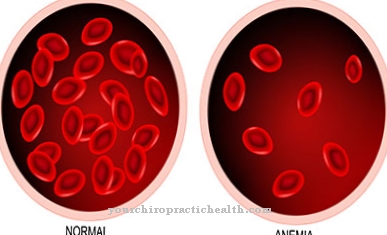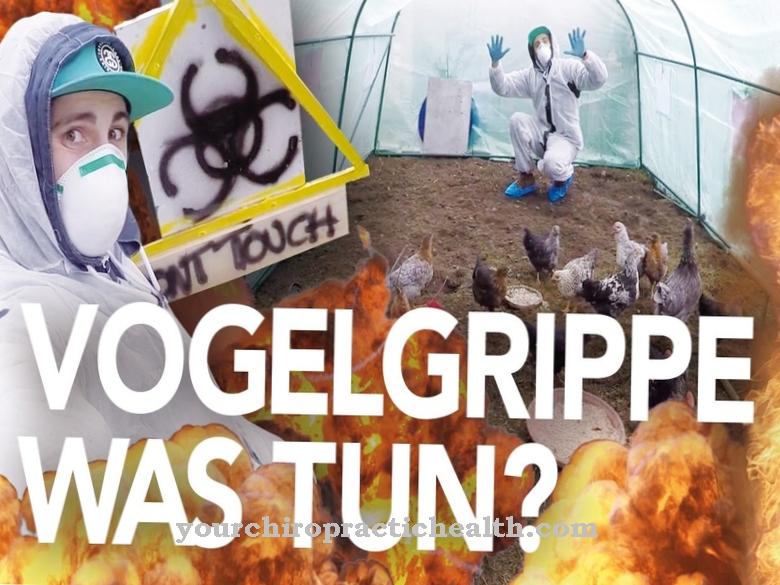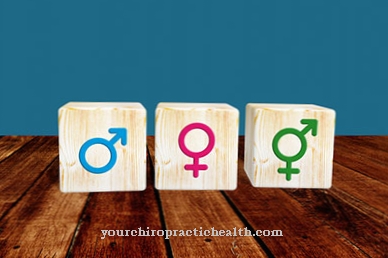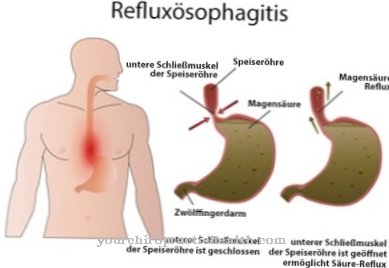The Saldino-Noonan Syndrome is a hereditary thoracic dysplasia that is usually fatal. Defects of the internal organs usually occur as side effects. In exceptional cases, the patient's small lung volume can be enlarged surgically.
What is Saldino-Noonan Syndrome?

© bilderzwerg - stock.adobe.com
The Saldino-Noonan Syndrome is a hereditary skeletal dysplasia of the thorax. It belongs to the short rib polydactyly syndromes and corresponds to type 1 within this clinical picture. All types of this group are characterized by dysplasia of the ribs and underdeveloped lungs. The respiratory insufficiency in this disease is inevitably related to the genetic underdevelopment of the thorax.
Therefore, this form of insufficiency is also known as thoracic insufficiency syndrome. The short rib polydactyly syndrome occurs in a total of seven different types, which differ in morphological-radiological criteria. In addition to the Saldino-Noonan syndrome, the international classification only includes three other types: Majewski, Verma-Naumoff and Beemer-Langer syndrome. Radiologist Ronald Saldino and geneticist Charles Noonan first described Saldino-Noonan syndrome in the United States during the 1970s.
causes
All types of short rib polydactyly syndrome are inherited as an autosomal recessive trait. This means that if the disease is present on a recessive allele in one of the two partners, it must also be present in the second partner for transmission to be recessive. If only one of the two recessive alleles bears the defect, the intact allele covers up the defect in the other. So far, there is no definite incidence of the presumably extremely rare Saldino-Noonan syndrome.
However, this type of short-rib polydactyly syndrome is considered less common than, for example, the Verma-Naumoff type. The localization of the defective alleles has not yet been conclusively clarified either. This distinguishes the research on Saldino-Noonan syndrome from other short-rib polydactyls such as Jeune syndrome, for which the causative gene has already been localized in at least one subgroup. As with all autosomal recessive diseases, the recessive carrier allele probably arises as part of a mutation.
Symptoms, ailments & signs
Short ribs with a hypoplasia of the thorax are the main symptom of Saldino-Noonan syndrome. Due to the minimal space available, the lungs are underdeveloped from birth, which results in thoracic respiratory insufficiency. The long bones are shortened or at least deformed. As a rule, there is also polydactyly, i.e. four fingers.
The dysplasias of the finger skeleton occur more frequently in all forms of short-rib polydactyly and are therefore included in the group name. The root of the nose is usually sunken in people with Saldino-Noonan syndrome. Sometimes there is a cleft lip and palate and the chin is small. Usually the amount of amniotic fluid at birth is below the norm of 200 to 500 milliliters, so that oligohydramnios can be spoken of.
The internal organs are often affected by defects. Complicated heart defects are just as common as a short bowel, malformation of the rectum or harmful bowel movements. The esophagus is partially interrupted and the epiglottis, kidneys, or genital organs are malformed.
Diagnosis & course of disease
The diagnosis of Saldino-Noonan syndrome can be made via x-ray imaging immediately after birth. The horizontal ribs appear in the X-ray image as short and pointed bones with barely ossified tubular bones. The bone structure is generally amorphous and the blades of the pelvis appear as horizontally running acetabular roofs on small vertebral bodies with a round shape.
Usually the extremities are shortened. The diagnosis can usually even be made before birth and can be determined relatively unequivocally using sonography. The course of this disease is unfavorable. As a rule, there is talk of a lethal course. Only in rare cases do those affected survive the first few years. Life expectancy depends largely on the extent of the dysplasia and the accompanying organ insufficiency.
Complications
As a rule, Saldino-Noonan syndrome can lead to various compilations and complaints. The internal organs in particular are often damaged in this disease, so that under certain circumstances the patient's life expectancy may be reduced. With this syndrome, those affected primarily suffer from severe underdevelopment of the lungs.
This leads to breathing difficulties and, in severe cases, to respiratory insufficiency. Furthermore, there can also be a loss of consciousness due to the inadequate supply of oxygen to the internal organs. In some cases, those affected suffer from multiple fingers and are therefore often teased or bullied, especially at a young age. A cleft palate is also common in Saldino-Noonan syndrome and can make it much more difficult to eat and drink.
In many cases, the parents and relatives also suffer from the symptoms of Saldino-Noonan syndrome, psychological complaints or depression. Furthermore, the syndrome can lead to a heart defect, so that those affected can also die of sudden cardiac death. Since there is no causal treatment for Saldino-Noonan syndrome, only symptoms are treated. There are no particular complications. The life expectancy of the patient may be significantly negatively affected.
When should you go to the doctor?
Saldino-Noonan syndrome must always be treated by a doctor. In most cases, however, this syndrome leads to the death of the person concerned, so that the symptoms can only be alleviated. Complete healing cannot be achieved. A doctor should be consulted if the patient has very severe breathing difficulties. These symptoms are manifested by gasping for breath or by the skin turning blue. In some cases, those affected also lose consciousness.
Should these symptoms arise, a doctor must be consulted in any case. Furthermore, the doctor should also be consulted if the person concerned suffers from multiple fingers or even has a cleft palate. Since Saldino-Noonan syndrome can also lead to heart problems or defects, regular examinations of the heart and internal organs should be carried out to prevent further symptoms. Psychological counseling can also be useful in the case of Saldino-Noonan syndrome, as the parents and relatives in particular often suffer from psychological complaints or depression.
Treatment & Therapy
If the patient is suitable and the organ insufficiencies make sense at all, the doctor can suggest a vertically expandable titanium rib prosthesis for the treatment of Saldino-Noonan syndrome. In this procedure, the narrow rib thorax is surgically widened and straightened using a titanium implant. The titanium rib used for this is extendable and curved. This titanium rod has several holes in a row that can be used to fix the required length.
Around six months after the first procedure, a second operation to lengthen the rod is performed. Usually the surgeon fixes the rod between the ribs or he places the titanium implant between the iliac crest and a rib and thus achieves the pry-up effect. In this way the spine can be straightened indirectly. The straightening of the spine automatically increases the volume in the rib thorax and thus expands the lung volume.
The operation is not suitable for all patients with Saldino-Noonan syndrome because those with severe heart defects are unlikely to survive the operation. If the operation can be performed and if the procedure is successful, some of the accompanying dysplasias may also be corrected surgically. The mortality rate for Saldino-Noonan syndrome nonetheless remains high and the quality of life low.
The patients usually suffer from an unacceptably large number of deformities that are different, but all of which carry vital structures. This means that there is little chance that all of these can be compensated for without life-threatening consequences. The parents of affected children are usually looked after by psychotherapy.
You can find your medication here
➔ Medication for chest painprevention
So far, the Saldino-Noonan syndrome can only be prevented insofar as the disease can now be diagnosed using ultrasound during pregnancy. The decision for or against a child with the syndrome is left to the parents.
Aftercare
Those affected with Saldino-Noonan syndrome should do everything to increase their well-being. Any activities that were performed before the illness should be planned and undertaken again. Most of those affected die in the first few months of the disease. For this reason, parents and other family members should inform themselves sufficiently about the disease.
They should seek permanent psychological counseling so that they can learn to deal with the illness and the loss it causes. Those affected must also be informed in good time about the disease and its consequences. The focus is on making the rest of the person's life as beautiful as possible.
The quality of life should be increased significantly with things that the person concerned likes. The person affected should also seek permanent psychological counseling. There you can learn how to deal with the disease. In addition, it can be learned how those affected can live with the disease in everyday life.
It is also recommended that those affected go to a self-help group. There they can talk to other sick people and do not feel alone with the disease. In addition, new ways of living with the disease can be learned there. Affected people should only stay in places where there is sufficient oxygen. Relatives who smoke should avoid dealing with the sick person.
You can do that yourself
Self-help measures in Saldino-Noonan syndrome focus on promoting well-being. In most cases the disorder ends with the premature death of the patient in the first months or years of life. Parents and relatives should therefore inform themselves sufficiently about the disease and the resulting consequences. The child must be informed as early as possible about the course of the disease and the existing disorder.
The focus is on the design of the common lifetime and measures to optimize the quality of life. In order to strengthen mental strength and relieve emotional stress, all those affected should take part in psychological support. The processes and developments must be processed so that no secondary diseases arise and the relatives can adequately care for the child. In addition, psychotherapy strengthens the growing child in everyday life in dealing with physical and emotional complaints.
The patient's surroundings should be enriched with sufficient oxygen. Since the function of the lungs is often impaired by the disorder, environments in which there are pollutants in the air should be avoided. Smoking must therefore be completely avoided in the presence of the patient. Leisure time activities are to be geared towards the needs and possibilities of the person concerned. The joy of life should be encouraged. In addition, success stories strengthen the patient's self-confidence.













.jpg)

.jpg)
.jpg)











.jpg)